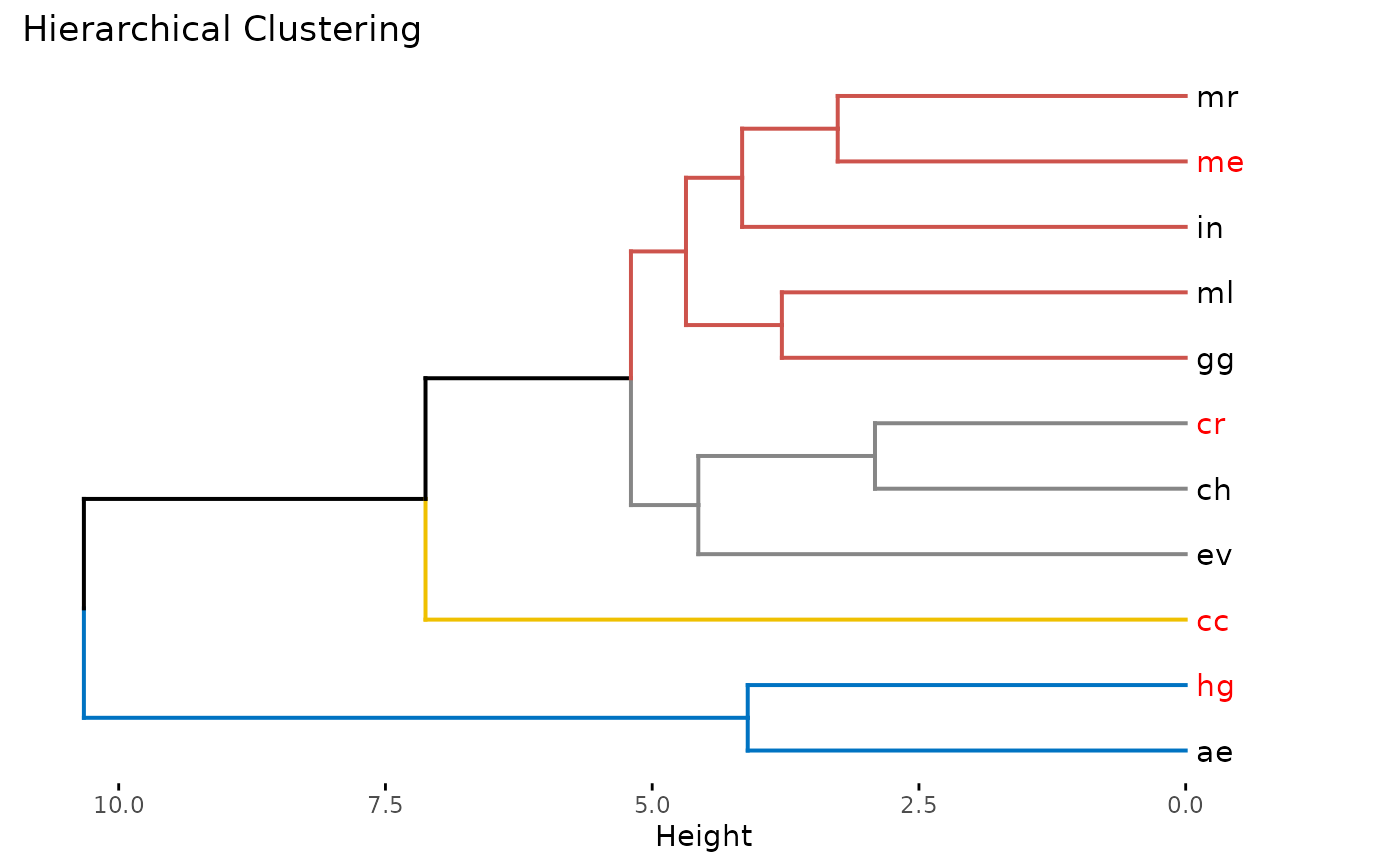This function performs hierarchical clustering on a random subset of raster values and produces a dendrogram visualization of the clusters.
Usage
hclust_gcms(
s,
var_names = c("bio_1", "bio_12"),
study_area = NULL,
scale = TRUE,
k = 3,
n = NULL
)Arguments
- s
A list of stacks of General Circulation Models (GCMs).
- var_names
Character. A vector of names of the variables to include, or 'all' to include all variables.
- study_area
An Extent object, or any object from which an Extent object can be extracted. Defines the study area for cropping and masking the rasters.
- scale
Logical. Should the data be centered and scaled? Default is
TRUE.- k
Integer. The number of clusters to identify.
- n
Integer. The number of values to use in the clustering. If
NULL(default), all data is used.
Examples
var_names <- c("bio_1", "bio_12")
s <- import_gcms(system.file("extdata", package = "chooseGCM"), var_names = var_names)
study_area <- terra::ext(c(-80, -30, -50, 10)) |> terra::vect(crs="epsg:4326")
hclust_gcms(s, var_names, study_area, k = 4, n = 500)
#> $suggested_gcms
#> [1] "hg" "cc" "cr" "me"
#>
#> $dend_plot
 #>
#>
